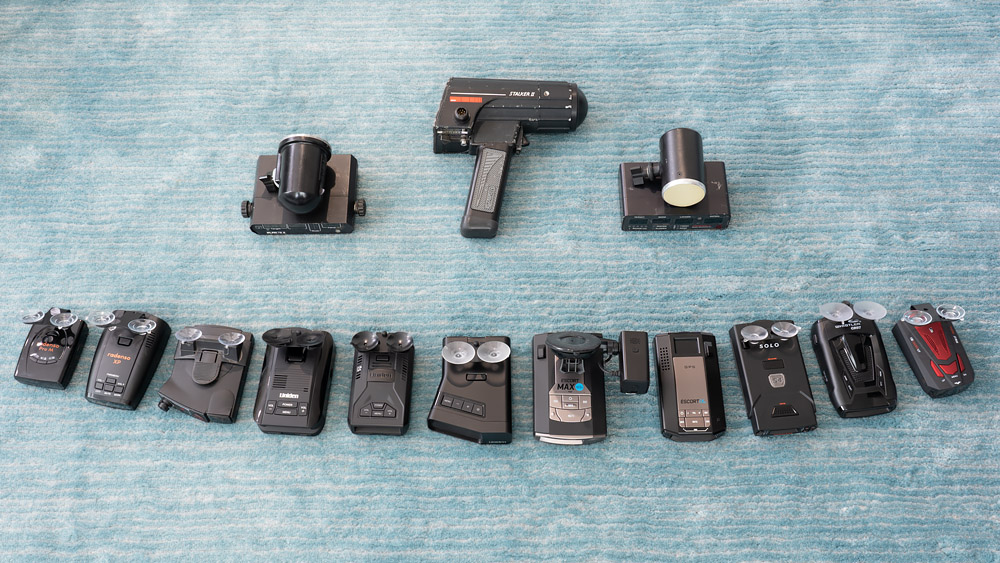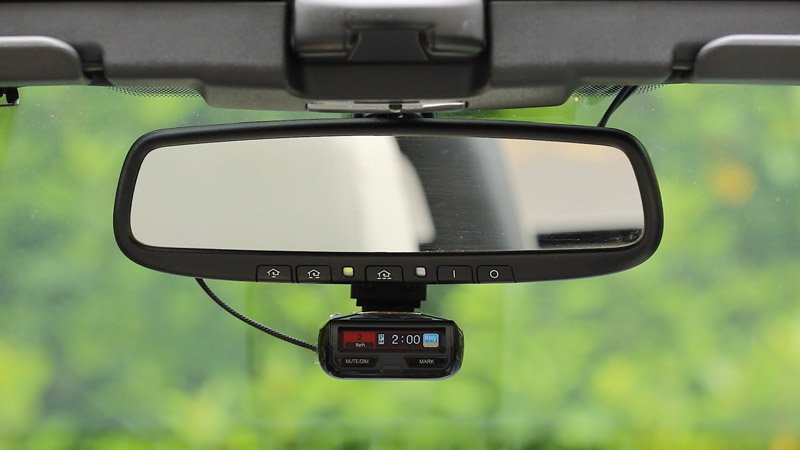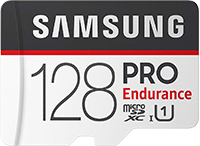Are you new to countermeasures like radar detectors and laser jammers? Here’s answers to some of the most frequently asked questions.
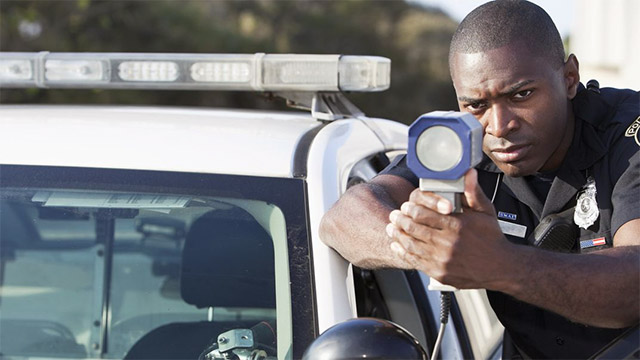
Radar Detectors
A radar detector is an electronic accessory that mounts in your car and alerts you whenever officers nearby are actively running radar, looking for speeders.
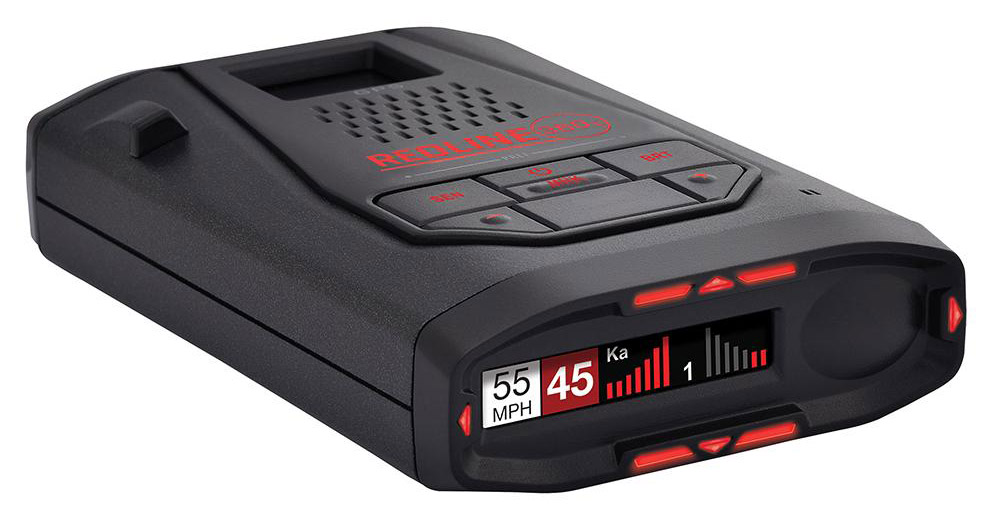
Note: A radar detector is not a police car detector. It’s a radar detector. It alerts only when officers nearby are actively running radar. It will also alert to some non-police radar sources too so false alert filtering is important.
The radar detector that’s best for you depends on your preferences, budget, and even personality. There’s no detector that’s best for everyone.
Fortunately there’s a lot of great options and I’m happy to help you decide.
There’s a bunch of radar detectors on the market, some good and some bad, expensive or cheap, simple or fancy. What’s the difference?
The most basic ones will beep when they detect radar, but typically the range is poor and you’ll get a ton of false alerts so I recommend avoiding the super cheap ones (under $150 or so).
Better detectors offer longer range (important for tougher situations) and better false alert filtering.
Then some high end detectors add features like directional arrows, GPS, Bluetooth with app integration, photo radar detection, and more.
You can find my recommendations at different pricepoints here.
Check out this video for more info about different key features:
A radar detector is not a police car detector. It’s a radar detector. If a police officer doesn’t have a radar gun in their vehicle (and many don’t) or if they simply aren’t actually running radar and transmitting, there’s nothing for your radar detector to detect and thus it will stay silent.
This is very common.
There are many sources of radar that can trigger a radar detector. A police radar gun is just one of them.
Examples of other sources of radar include automatic door openers in drugstores and grocery stores, speed signs on the side of the road, as well as many cars and semis with blind spot monitoring (BSM) systems. These BSM and collision avoidance systems often operate on K band, are becoming especially common, and can be very tough to filter out.
Higher end and newer detectors have better false alert filtering and more types of filters to deal with different sources of false alerts.
Radar detector alert distance can vary due to many different factors.
In ideal situations you can get over 10 miles of range.
Here in Seattle, my maximum alert distance is no more than a mile due to the terrain and trees.
In tougher situations you may get 1/4 of a mile or less.
Lower end detectors work fine in easy situations, but may not give any advanced warning in challenging situations. Tougher situations require more sensitive radar detectors.
Maximum alert distance can be affected by many factors including:
- Radar detector sensitivity
- Which settings you’re running on your detector
- Radar gun output power
- What direction the officer has his gun pointed
- Terrain (Radar can travel farther in flat terrain and is blocked by hills, curves, and trees)
- Instant on usage
- On-axis vs. off-axis sensitivity
For more info, see this video:
Radar detectors can not give you 100% protection. It’s important to understand their capabilities and limitations.
When police officers are using radar up ahead, radar detectors can provide plenty of advanced warning to let you know before the officer is able to acquire your speed.
However, if the officer is using instant on (turning his radar gun on and off), you may not get any advanced warning. Using a rabbit and a sensitive detector are key for detecting instant on. See this video for more info.
Additionally if they’re using some other technology like laser, vascar, visual estimation, or air enforcement, your radar detector won’t reliably protect you from those. That’s why it’s important to have multiple layers of protection. I recommend running 1) a good radar detector, 2) a good laser jammer, and 3) Waze.
Radar is actively used nationwide though and so when officers are using it in your area, your radar detector will be an invaluable tool. I personally get more saves from my radar detector than any other countermeasure.
Radar detectors are legal across most of the United States, except in Virginia and Washington D.C. If you’re caught in Virginia, it’s a small ticket and no points. They used to confiscate your detector, but the law has been relaxed and they no longer do that. They simply write down your RD’s serial number instead. You can read the VA law here.
Radar detectors are also illegal on military bases, commercials trucks over 10,000 pounds, or any vehicle over 18,000 pounds no matter where you drive in the US.
Radar detectors work by detecting radar that’s being shot up ahead of you and giving you time to adjust your speed accordingly before it’s your turn to be clocked.
Radar jammers will actively jam the police radar gun, preventing it from getting a reading.
The thing is that unlike radar detectors, radar jammers are massively illegal. I’m talking huge financial penalties and prison time. Additionally, the radar jammers that were produced years ago don’t work well against modern radar guns and fall out of tune over time. That combined with the legal issues means that no one has made anything new to jam radar for obvious reasons.
So radar detectors are cool, but radar jammers are not.
You know how your car stereo can tune to different radio stations because they broadcast on different frequencies? Police radar guns also transmit on different frequency ranges, or different bands.
X band (around 10.5 GHz) is the oldest technology and least common. With its huge antennas, X band has been phased out of most of the country, except for Ohio, New Jersey, and a few rural places across the country. Since you’ll get false alerts from some shopping center door openers, most people now shut off X band detection altogether.
K band is newer and operates around 24 GHz. Police use K band throughout most of the US. Unfortunately there’s a lot of other sources of K band besides police radar including speed signs, automatic door openers, and many new vehicles with blind spot monitor (BSM) radar and smart cruise control. For that reason, K band false alerts are common and you’ll want a modern detector with good false alert filtering.
Ka is the newest and most common band and and you’ll find it on 33.8, 34.7, and 35.5 GHz. It has the smallest antennas (because it uses the highest frequencies). Ka falses are also pretty rare so if your detector alerts to Ka, pay attention.
Radar detectors do have laser detectors, but unfortunately they don’t offer any true protection against speeding tickets.
Due to the way laser is designed, you generally won’t get any advanced warning from your radar detector. By the time it goes off, the officer already has your speed. In essence against laser, a radar detector is little more than a speeding ticket notifier.
Additionally, because laser is such a thin and small beam, when an officer is aiming at your front grill or rear plate, often times your radar detector won’t even alert at all. It’s for that reason that I recommend pairing a laser jammer with your radar detector.
Generally the best place to mount a detector is up high by your rear view mirror. That gives it the best view of the road and thus the best performance, you can hide it behind your tint strip so it’s less visible from the outside, and it leads to a cleaner install when you hardwire the detector.
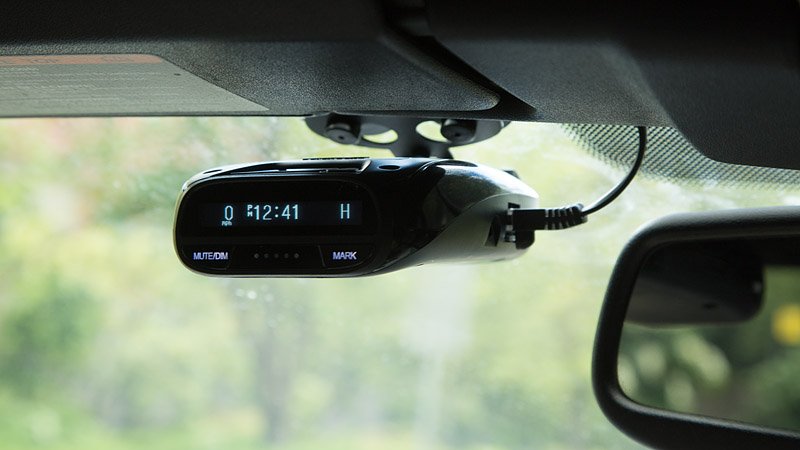
Another good option is to hang it under your rear view mirror using a Blendmount. This is helpful for areas where it’s illegal to attach radar detectors to your windshield, plus it avoids suction cup failures leading to your radar detector falling and hitting your dash.
You can also mount it down low on the windshield, but you may see slightly less range in certain situations and it’s often harder to reach your radar detector.
I don’t recommend mounting near the A-pillar because the windshield’s curvature leads to the detector angling off sideways.
Pro-tip: Be sure to angle your radar detector straight ahead for best performance. Don’t point it to the sky like you’re trying to pick up the International Space Station. 😉
Unfortunately there aren’t any good cordless radar detectors. All of the options available feature very outdated technology. Additionally, in order to conserve battery power, the detectors are constantly going to sleep briefly while you drive which hurts detection.
The best one used to be the Escort Solo S4, but its underlying platform hasn’t been updated since the 90’s and it’s since been discontinued. Performance was really bad, there was no GPS, it would misreport K band as Ka, it lacked modern BSM filtering so it falsed constantly, etc. So even the best option was really bad…
Sticking to a cig. lighter for power is the preferred option for rental cars, though I understand that’s not always ideal. If you don’t want a cig. lighter cable present in a permanent install, hardwiring is the way to go.
Metallic-based tints will block radar signals and significantly reduce detection range.
Non-metallic tints like ceramic tints are just fine.
Those little dots on your windshield (frits) are generally fine too. The same rules apply. They may make it tougher to attach your radar detector to your windshield if they’re stuck on the glass instead of embedded within it.
This video explains this too:
Here’s a great video which goes into way more detail and testing:
and here’s how you can easily test this for yourself:
In terms of laser, any tint that blocks light will reduce the detector’s sensitivity. However, radar detectors are best for radar and that’s what you should optimize for. If you need laser protection, I suggest you run Waze and get a laser jammer.
Yes. Radar guns typically have the ability to operate both in stationary mode or moving mode.
Police officers can also pace you which means they drive at the same speed as you and measure your speed by looking at their speedometer. Unlike using radar, pacing doesn’t set off radar detectors.
Laser, on the other hand, can only be used when stationary.
Yes. Many police cars are equipped with one antenna that points out the front of the vehicle as well as a second antenna that aims backwards.
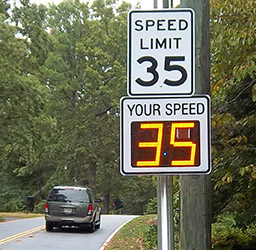 Speed signs on the side of the road aren’t built to the same tolerances and specifications as police radar guns so over time they may start to drift out of normal specifications.
Speed signs on the side of the road aren’t built to the same tolerances and specifications as police radar guns so over time they may start to drift out of normal specifications.
Radar guns need to be regularly calibrated and certified, especially because people often challenge their accuracy in court.
Speed signs on the side of the road aren’t used to issue tickets so the rules are more relaxed. Because of this, they may drift in frequency outside of the normal accepted operating ranges, especially with outdoor temperature fluctuations or simply just with time. The sign may still display a speed, but your detector may not alert if it’s outside the scanning range of your detector.
Solar powered speed signs may start to lose power on cloudy days and with the batteries dying, the speed signs will drop in power or stop functioning at all.
I’ve seen many radar detectors alert to some speed signs and not others, and this is true with Uniden, Escort, Radenso, Valentine, etc. Countless other radar detector owners have reported the same behavior.
If you’d like to doublecheck your detector’s settings, most speed signs operate on K band so make sure you have your detector set up to scan all of K band. (Don’t use K band segmentation or any K Narrow options. You could also try disabling any K band filters as you test.) Some speed signs transmit on X or Ka band, but this is less common.
Radar detectors are designed to alert you to police radar guns. Just because a radar detector doesn’t alert to certain speed signs doesn’t mean that it’ll also have issues alerting to radar guns.
In fact I’ve seen certain manufacturers starting to intentionally add some filtering to filter out speed signs, but they don’t seem to be doing this too aggressively, presumably because of the constant worries of “My detector didn’t alert to a speed sign! Something must be wrong and my detector must be broken. I’m returning this thing!” lol
(On a related note, it’s interesting that people complain both if their detectors false too much, as well as not enough. It’s understandable, of course, but still funny.) ?
I don’t ride motorcycles so I’m not the best person to ask, sorry.
However, since first-hand perspective is so helpful and I really want you to get the answers you’re looking for, check out this great discussion talking about motorcycle-specific radar detector usage from fellow enthusiasts who also ride.
Living in the US, it’s not feasible for me to do so. Things vary widely all over the world so what I know about using radar detectors in the US and Canada often doesn’t apply in other countries. Additionally, testing international radar detectors here in the US doesn’t tell us much.
Around the world there’s different radar detectors not sold here, different radar guns, frequencies being used, and even international firmware versions which makes the same detectors behave differently. Not to mention there’s different laws and enforcement tactics used around the world. Since I don’t have the same international radar guns here in the US, there’s no way for me to test international radar detectors designed against those threats.
While I have tested a few international radar detectors here in the US, I’ve found that they’re not optimized for the States, they don’t do a good job of filtering out cars and BSM falses we have here, and ultimately I can tell they’re not a good fit here. However, that doesn’t tell me much about if they’re a good fit for other countries where the driving conditions are completely different.
Since this isn’t something I’m able to properly test myself, I typically refer to others who live and drive in your country and am always hoping more people step up to test and share what they find in their countries.
Here’s a few resources you can check out:
New Zealand: Check out this article
Russia: RD-forum.ru
Spain: Todoradares
General International Discussion: International area of RDF
If you’d like to know more about what works best in your area, I’d like to invite you to start testing and sharing your results too. We really need more people around the world helping and sharing information.
Yep! You can check out all the discount codes and deals here.
lol, well even the detectors I don’t use often, I still like to keep on hand for future updates, tests, and comparisons.
If you’d like an affordable detector, I typically recommend the mid-tier Unidens. Check out my favorite picks at different price points.
Check out my radar detector tutorials.
If you have questions, you can often find the answers on my YouTube channel or here on my website.
For example, if you need help programming your radar detector, check out my radar detector tutorials.
Want to discuss things in even more detail? By far the best place to ask any questions and get tech support is RDF, the Radar Detector Forum.
Finally, you can always reach out to manufacturers directly for help with their products. Here’s where you can find customer service for Escort, Uniden, Radenso, or Valentine.
Laser Jammers
The best laser jammer is the AntiLaser Priority.
Depending on your preferences and setup though, another jammer may be a better choice. Take a look at my recommended laser jammers to decide which one is best for you.
When a laser jammer detects a police officer’s gun, it fires back a return signal that confuses the gun and temporarily prevents it from being able to get a speed reading. This gives you enough time to slow down and disable your laser jammer so the officer can get a reading off your vehicle.
Early laser jammers used simple brute force techniques that blasted a bunch of fake laser signals back.
Newer laser jammers are much more intentional about when the send back jamming pulses.
Since laser uses light, when officers are using laser guns, they’re going to want to target the most reflective spots on your vehicle including the headlights, front grill, and front plate (if applicable).
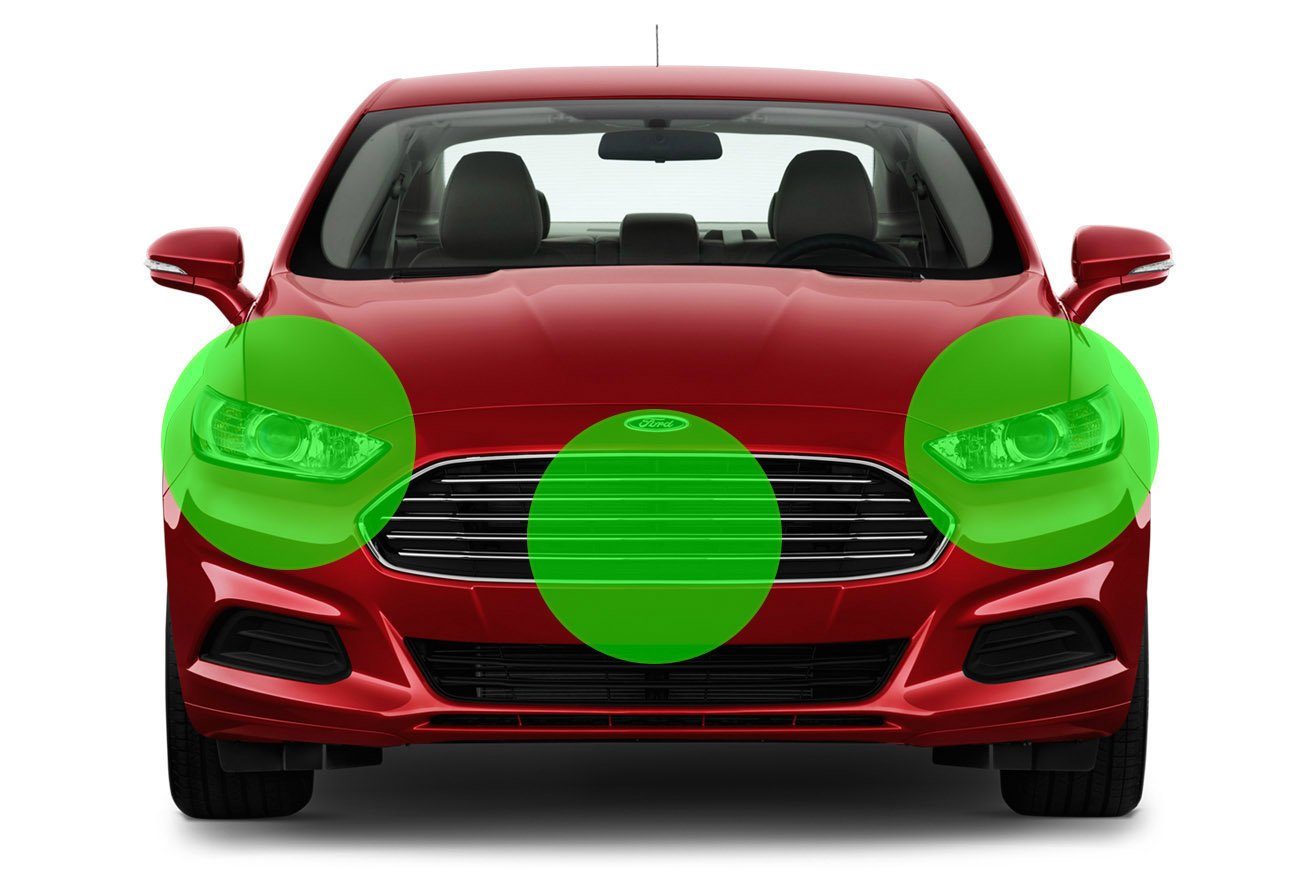
Modern laser guns can get a reading off of most any part of the car and any color car, but those are the general targets they’re typically aiming for.
If officers are targeting the rear of your vehicle, it’ll be the same areas: tail lights or rear license plate.
Laser is a very thin beam of light which makes it very hard to detect. Generally speaking, your radar detector’s built-in laser detector will only alert when you’re being targeted. Except for very rare instances, it won’t go off if the officer is targeting someone else. (Additionally, given that laser is aimed at your grill and your radar detector is up on your windshield, it may not even alert when you’re the one being targeted. ) For this reason, you can’t reliably depend on getting any advanced warning and thus protection against laser the way you can with radar.
Instead of relying on a laser detector, a better tool is a laser jammer. This is a custom installed piece of hardware that not only detects when you’re being shot, but it also actively fires jamming pulses back at the police officer, preventing him from getting a reading until you slow down and disable your jammers.
Variable pulse rate laser guns, or VPR guns, vary the timing of when they transmit each individual pulse so that laser jammers can’t easily predict when the next pulse will arrive and thus when they should send back their jamming pulses. VPR technology is being used by some laser gun manufacturers in an effort to defeat laser jammers.
There are several manufacturers who now VPR technology in their guns, and DragonEye because they were the first to start taking VPR seriously.
VPR technology was effective against earlier laser jammers, but many newer jammers have figured out how to jam VPR guns and they continue to receive updates as new VPR pulse patterns come out.
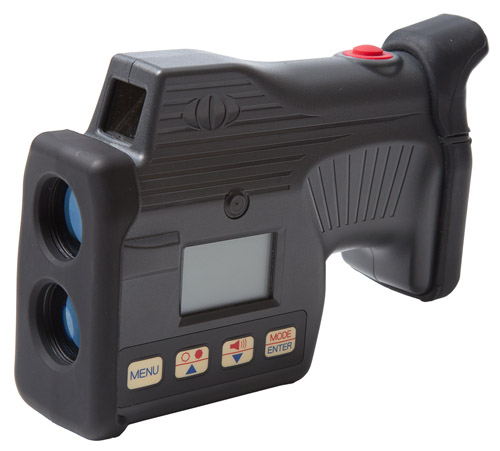
They are legal in 40 out of the 50 states and are illegal in 10 including California, Colorado, Illinois, Minnesota, Oklahoma, South Carolina, Tennessee, Texas, Utah, and Virginia.
Penalties if caught are generally pretty minor, akin to a fix-it ticket, like having tint that’s too dark or not running a front plate if you’re supposed to.
To keep officers from getting suspicious, you’ll want to slow down and let them get a reading off of your vehicle within a few seconds. (3-4 seconds max is recommended)
Even in areas where laser jammers are legal, in order to ensure they stay legal, it’s best not to poke the bear. In the past, people have gone around intentionally jamming officers has only led to laws being passed making them illegal in those states.
See this video for more info:
False alerts on laser jammers are very rare. Unlike radar detectors, laser jammers need to carefully analyze the incoming laser signal and so they do a much better job of recognizing and filtering out false alerts compared to radar detectors.
While you can install your own laser jammer if you’re comfortable working on cars, many prefer hiring a professional, especially for luxury cars that tend to be harder to work on and/or when the install requires some custom fabrication or drilling.
An important point to note is that there’s a lot of installers that are awesome at doing the actual installation and running wires, but they may not necessarily know the best practices on how to install radar detectors or laser jammers to make sure they perform optimally. Some even install them in a way that may look great, but completely destroys performance.
As the saying goes, “stealth the car, not the install.”
Here’s a few rules of thumb to know:
Custom Installed Radar Detector placement:
- Ideally install the heads with clear line of sight to the road ahead
- If needed, you can install behind flat plastic body panels with non-metallic paint
- Avoid installing behind mesh grills, metal, or metallic paint as they all reduce performance
Laser Jammer placement:
- Installs the heads straight and level, pointed straight ahead
- Don’t aim heads sideways to follow the curvature of a body panel
- Heads should be fairly flush with the grill, not tucked back inside
- Two regular heads need to be somewhere near’ish the headlights, the third head generally goes in the center
Now to find an installer in your area, you can use various dealer/installer locators. Here they are for AntiLaser, Escort, and Radenso.
I personally use Musicar Northwest in Portland, OR and am very happy with their work. You can also ship cars to them if you’re out of the area.
Here’s a few other installers I’ve heard good things about, but have never used personally:
- Bellevue, WA: Systems Unlimited
- Spokane, WA: Spokane Audio
- Cincinnati, OH: Cincy Security and Sound
- Boston, MA: JK Automotive
- Lewes, DE: Musiac Design
- Sarasota, FL: Automods
- Atlanta, GA: CarTunes Atlanta
Dashcams
Dashcams continually record while you drive and, optionally, while you’re parked.
They provide additional protection and peace of mind in case anything happens while you’re on the road.
In case of an accident, you have the video footage to send to insurance to prove you weren’t at fault, saving you time and headache.
Involved in a hit and run? Your dashcam will capture the vehicle and license plate so your insurance company can go after them without you having to pay your deductible.
Someone key your car? Capture the video to find out who it is and even record their face on camera.
Something interesting or unexpected happen on the road? You can save that too to share online.
Personally I find dashcams to be a must. I always run one in my car and installed one in all of my family members’ cars too. Here’s my top dashcam picks.
At minimum, you’ll want a high quality front facing dashcam recording while you drive.
Many dashcams also offer parking mode recording too.
For additional protection, you can also get a 2-channel dashcam that records front and rear.
There’s also dashcams that record inside the vehicle (popular for Uber and Lyft drivers), an LCD display, cloud connectivity, and more. Popular brands include Viofo, Blackvue, and Thinkware.
Check out my top recommended dashcams here.
Dashcams put a lot of wear and tear on memory cards and so I generally recommend a proper high endurance card specifically designed for being written to constantly. The Samsung 128gb Pro Endurance cards and Sandisk 256gb High Endurance cards are two solid picks.
Manufacturers often sell their own branded memory cards, but they tend to be more expensive. Third party endurance cards from reputable manufacturers are a much better bang for the buck.
It’s also good practice to periodically format your dashcam’s memory card too.
General
Do you have an awesome radar detector or dashcam? If so, I’d love to check it out and potentially share it here on my website or on my YouTube channel!
That said, I gotta be up front that I turn down 99% of the product review requests. It’s very time consuming to do in depth tests and create detailed reviews so I’m now very selective with what I choose to review.
I prefer covering higher end products and/or something with unique and creative features. (There’s a thousand different dashcams on Amazon, for example, and most are fundamentally pretty similar, so I’m always looking for something a little different and interesting.)
I also make no guarantees when (or even if) I’ll release a review for a product I take a look at. It all depends on how I like it and how things fit into my release schedule.
If you have an awesome and interesting product that fits my niche of automotive electronics that help keep drivers protected and aware, you can reach out to me on Facebook, Instagram, or Twitter.
I am not sponsored by any manufacturer.
I don’t do paid or sponsored reviews or recommendations.
At the end of the day, it doesn’t matter to me personally which radar detector you buy. I want you to run whichever detector is best for you, to understand how it works, and to enjoy the experience.
If that means you run a Uniden, Escort, Radenso, Valentine, Cobra, Stinger, or anything else, awesome. Whatever tool works best. 🙂
Please see this article for more information about how I do make money through affiliate links, donations, YouTube ads, etc.
If you have a question, chances are you can find the answer on my website or YouTube channel.
If you’d like to chat about countermeasures, I ask that you do in a public area so that everyone can participate and benefit. Good examples include the comment area beneath any article, YouTube video comments, or RDF.
While I’d love to be able to respond to everyone, I get tons of messages and am not always able to reply and still have time for all my tests, reviews, and videos. (It’s part of the reason why I’d love your help in making this information available publicly to everyone.)
If you’d like personalized advice choosing or setting up your countermeasures, you can book a private session with me.

